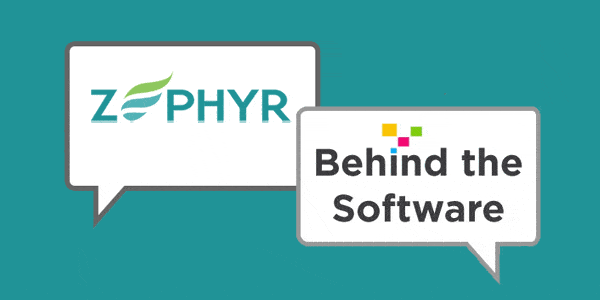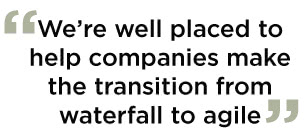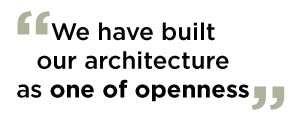QA Testing
Behind the Software Q&A with Zephyr CEO Samir Shah

These days, software releases are expected to be fast and flawless. To release high-quality software quickly and efficiently, software development teams need the best application development and testing tools, and they need these tools to work in real time. In this week’s Q&A with Zephyr CEO and co-founder Samir Shah we talked about how Zephyr, with its deep integrations with top products, is the only real-time test management tool that can handle the needs of agile development teams.
WEBSITE: www.getzephyr.com
LAUNCHED: 2007
LOCATION: Newark, California
CUSTOMERS: Amazon, Barnes & Noble, BMW
How did Zephyr get started? What void in the market did you seek to fill?
We’ve been in the testing space for over 20 years now, and have had the chance to play with a wide variety of different tools in the market, including commercial, open source and homegrown. We learned that something was still missing from all of these tools and that there was a better way to align Dev and quality assurance (QA) initiatives.
We also saw that the world of software development was changing; massive global outsourcing of IT, dev and testing made it really difficult to manage teams in different time zones and across language barriers. Plus the whole agile movement was happening and testing needed to catch up very quickly.
The cloud trend was starting to be widely adopted as enterprises experienced significant costs, benefits and productivity gains. By taking a step back to look at all of these factors and recognizing the limitations of the available options on the market, we decided to create Zephyr. We strive to provide our customers with responsive and affordable test management products that scale and mold to how they want to manage testing.
Zephyr has been hailed in the press on a number of “Best of” lists. In your opinion, what makes Zephyr a standout solution?
From our standpoint, we are the easiest to do business with across the board. From a product perspective, it’s the ease of use—our products play nice with a large number of open source and other commercial tools. From an IT perspective, we give customers the option of on-premise or in-the-cloud deployments. On the business side, we offer simple and flexible pricing models tailored to the customer’s needs. Our customers also appreciate our client services and support, as we ensure their success with our products. With subscription software customers really purchase a relationship, and the relationships with our customers are our number one priority.
Who is your ideal customer? What role does this customer play in the development process?
Our ideal customer is any project team or testing department that’s looking to build and release high-quality software on time and/or in the process of transforming to an agile fashion. It’s very important for these folks to not have testing be the bottleneck, as they’re releasing software rapidly. Of course, they do not want the quality of their software releases to be low when it gets out into the hands of their customers. These are the types of teams that we focus on.
Zephyr provides real-time test management. How does testing in real time benefit users?
As development and testing teams across the globe often end up working together on a software release, there are a large number of activities that each of these teams undertake during the software cycle. In an agile development project, everything that everybody does links to something that somebody else is doing, or is dependent on somebody else’s actions or tasks. Therefore, the progress of a project is highly dependent on these teams collaborating together and working on their tasks in a way that they’re always aware of who is doing what (what are they dependent on, what somebody else is dependent on, etc.).
In this kind of collaborative, agile mode of developing, testing and releasing software, if information is not shared in real time, then people end up doing things they shouldn’t do or waiting on things that they shouldn’t have to wait on. [A lack of real-time tools] dramatically slows down the entire product development process. Real time—from our standpoint—means a lot of different things: It’s the ability for team members or team leaders to very quickly assign tasks and activities to team members, and for that to show up immediately so that team members can start working on them right away—the information finds you.
The executive team needs to be aware of what’s going on in the project at any given moment, so that they are able to react proactively instead of waiting, like they would with a non-real-time system. Assigning tasks, real-time updates, real-time execution, real-time collaboration, real-time reporting—these are all key aspects our users gain by using Zephyr products.
It seems that real time is definitely a vital component for any development team. What other capabilities do customers gain by switching to Zephyr from other test management solutions?
Great question. The first one is obvious—real-time test management. As I mentioned earlier, Zephyr is the only real-time test management platform in the market, so customers immediately see the benefits of being able to get data pushed to them, as opposed to them going out and seeking data. These real-time updates are tremendously beneficial to project teams because the teams are able to react more quickly as they see changes happening, instead of working against obsolete information.
The classic example I would give you is the stock market. If you are trader and if you start getting stock updates four hours later—12 hours later, two days later, etc.—you’re going to miss out on opportunities. You’re not going to be able to react to the changing market. The same scenario is present in project teams, where the activities of one can impact the activities of the whole project team.
The other benefit customers get is the ability to integrate with a wide variety of different tools that customers are already using or are looking to use in the future. We have built our architecture as one of openness. We want to integrate with a wide variety of different tools: requirements management, defect tracking, automation, continuous integration and build integration tools. We want to work with these tools because we don’t expect our customers to throw away everything.
ALM solutions trap teams and force them to work within the parameters of their products. We want to give our customers the flexibility to test the way they need to today as well as change as their processes evolve overtime. In this day and age there are very specialized best-of-breed tools that solve some very important problems, and we want to make it as easy as possible for customers to use the tools they want.
Reduced cost of ownership is another huge benefit that customers get from switching to Zephyr. Many legacy tools that are out there are very, very expensive for the kind of benefits that they provide, and they don’t give you the flexibility of switching between on-premise and cloud and vice versa as needed.
Plus, when it comes to test management, we believe that Zephyr has one of the most pleasing UIs in the market. Testers actually enjoy using the software because it’s fresh, new and responsive; it looks good compared to a large number of the existing tools that customers might have been using. We started out by ensuring that users had a very good experience while using our software.
What trends are you noticing in the test management and application development industries? How are these trends affecting Zephyr’s products?
The trends that we’re seeing right now are definitely around the adoption of more and more tools in the development process. We’re seeing customers adopt more best-of-breed tools (as opposed to larger, monolithic suites of products) because that gives them the flexibility to pick and choose what they want. This trend shows in the large number of open source and agile-focused tools you’re seeing today. Zephyr’s strengths are right in line with this trend because we let you integrate with a wide variety of different tools.
The adoption of cloud and cloud deployment is a major trend that has been growing and continues to do so. Again, we are right in the midst of this trend because we have a cloud solution for our customers. Some of [our customers] are transitioning, so we also provide the flexibility of starting with on-premise solutions and then making that leap over to the cloud version at a later time.
The third trend is agile testing. I was recently talking with a large number of VPs on quality assurance in the financial district in Wall Street. We were talking about how everyone has a different view of what agile testing means, and how we were all in a process of transitioning within our organizations. We’re talking about large companies like Citi Group, Barnes & Noble and Viacom; these are the kinds of companies that are in the process of transforming to agile. They’re trying to get a handle on agile and agile testing, and they’re moving their projects to be more agile.

What does that mean from a testing perspective? Zephyr has a foot in both worlds, meaning the more traditional way of building software. We’re well placed to help companies make the transformation from waterfall to agile. There are very few companies that have made that complete transformation, mainly because they have their own legacy software releases that they have to continue working through, and they have a lot of legacy data and processes that they need to transfer into this new world. Our software helps project teams through the transformation journey.
So, what are the biggest challenges that project teams are facing in 2014?
One is definitely the transformation to agile testing. Another challenge is gaining visibility and communicating up and down the chain of command. It is important that the entire project team (especially executive management) is in sync and provided with an accurate representation of where they are in terms of the product lifecycle.
The most recent example is the healthcare.gov fiasco where project teams didn’t have complete visibility. If they had visibility, they would have known that this website was not going to scale beyond 200 users. While there were various red flags, those issues weren’t reaching the desktops of the right people at the right time. Visibility also means reporting and having the latest status so that you can take action before it’s too late.
The third challenge is both an opportunity and a challenge, and that is the wide variety of tools that exist out there. These tools are solving a lot of problems, be it mobile testing, security testing, performance, etc., but at the same time some vendors don’t provide enough integration capabilities, so companies can find themselves stuck in a vendor lock-in.
Many companies are calling this the “year of mobile.” Does mobile technology play a role in Zephyr? If not, do you see that changing in the next few years?
Yes, absolutely! Mobile is a key element of Zephyr in that many of our customers are either building hardware or mobile apps or taking new approaches to how their customers or end users consume data in the mobile space.
Users quickly get annoyed if an app doesn’t work well and is of low quality. We jump in and help developers make sure that what they release (whether it be on Google Play or an internal solution) is well tested and high-quality. When it comes to mobile, the key challenge for testing mobile apps is that they must be tested on various platforms, devices and operating systems (iOS, Microsoft, Android).
Another challenge is producing software quickly enough to keep up. Mobile application developers need to be able to get mobile apps and projects up very, very quickly, in a few weeks if possible. We have all sorts of features built into our product that allow you to speed up the creation process so that you can release software in a consistent fashion. If there’s a mistake in your testing and you submit a bad application to the Apple Store, they’ll reject it. Then it takes an additional two weeks to get it approved again. That’s two weeks of lost revenue. Zephyr can solve these problems.






